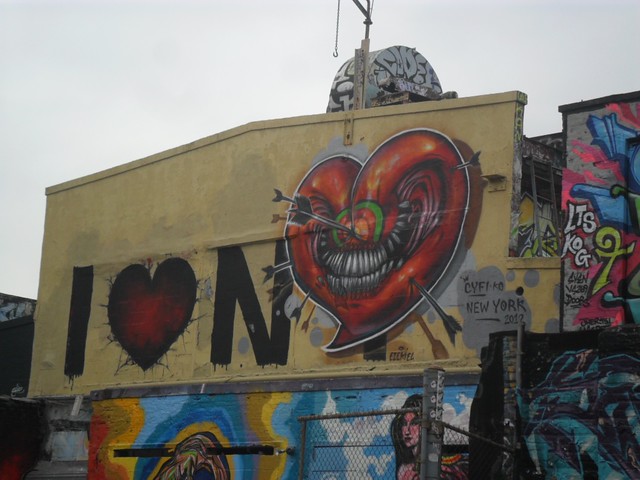One of my all time favorites is this:

Enjoy!
This segues nicely into Rem Koolhaas’ discussion of the model of “Manhattanism.” Koolhaas is known as an architect responsible for unorthodox buildings like the CCTV Headquarters in Beijing, but he has also meditated intensely on the zeitgeist of New York City development. In a chapter where he discusses how the Waldorf-Astoria hotel’s predecessor was demolished to make way for the Empire State Building, he notes:
The model for Manhattan’s urbanism is now a form of architectural cannibalism: By swallowing its predecessors, the final building accumulates all the strengths and spirits of the previous occupants of the sight, and in its own way, preserves their memory.
In the case of 5 Pointz, the space has been used as a cultural one since 1993, when Pat DiLillo, an artist in the Crane Studios, convinced owner Jerry Wolkoff to let graffiti artists paint the exterior. Wolkoff’s son David eventually took over, and gave his blessings to Jonathan Cohen, an artist who goes by the tag “MeresOne” and who changed the name from Phun Factory to 5 Pointz.
In interviews, David Wolkoff has expressed sadness that the building would have to come down, but noted that it would be prohibitively expensive to repair it so that it would be habitable again. While shrugging off complaints from neighbors critical of his decision to turn over his building to artists wielding those spray cans, he is also clear about what he sees as his role:
We’ve allowed them to have a safe haven to do their work, and now as a developer I have to be allowed to do the work I do, to create what I consider art, which is building buildings — which is an art form as well as an economic driver.
In the same interview, Wolkoff expressed confidence that the loss of the building wouldn’t leave the neighborhood bereft of art, citing PS 1’s presence. His view of that museum as an adequate replacement is unfortunately echoed by Joe Conley, chairman of the Community Board 2, which includes the building.
I can’t see that the community would lose anything with that building. It’s an outdated building, it’s from a bygone era, and it’s certainly not the efficient use of space.
To be fair to Wolkoff, he has also stated publicly that he would like to incorporate artists’ work into the new development, which would be made up of a 47-story tower and a 41-story tower, together encompassing 1,000 rental units and 30,000 square feet of retail space. And this is where the concept of Manhattanism’s “architectural cannibalism” comes into play.
Given the enormity of the project and the fact that Wolkoff is planning to build residential space in place of industrial space, it’s almost laughable to think the same sort of artistic freedom could abound in a place that Wolkoff told WNYC could have a gym, a pool, a billiards room and a supermarket.
But just as Koolhaas documents that the majestic Waldorf-Astoria was seen as a fitting site for the Empire State Building, so too does Wolkoff believe that his towers will, in Koolhaas words, “accumulate all the strengths and spirits of the previous occupants of the sight, and in its own way, preserve their memory.”

Next: MeresOne, the pressures of capital, and the future.
No comments:
Post a Comment